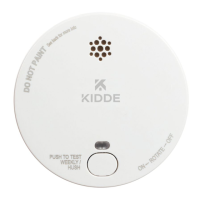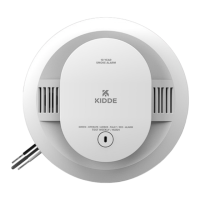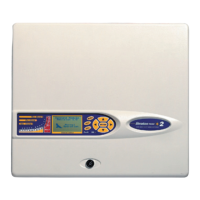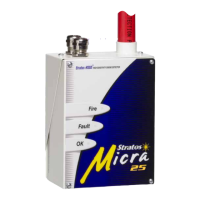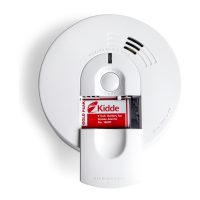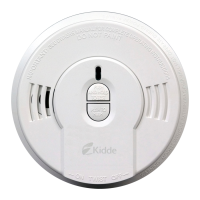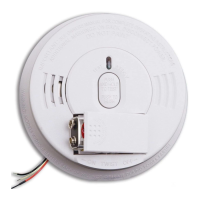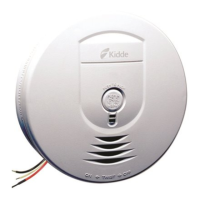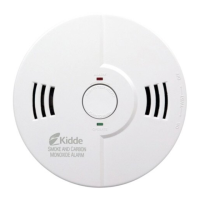IF THERE IS ANY QUESTION AS TO THE CAUSE OF AN ALARM, IT SHOULD BE
ASSUMED THAT THE ALARM IS DUE TO AN ACTUAL FIRE AND THE DWELLING
SHOULD BE EVACUATED IMMEDIATELY.
NOTE: DENSE SMOKE WILL OVERRIDE THE HUSH® CONTROL FEATURE AND
SOUND A CONTINUOUS ALARM.
CAUTION: BEFORE USING THE ALARM SMART HUSH
TM
FEATURE. IDENTIFY THE
SOURCE OF THE SMOKE AND BE CERTAIN A SAFE CONDITION EXISTS.
6.MAINTENANCE
BATTERY REPLACEMENT
If tamper resist has been used, refer to Figure 8 in Section 3 for alarm removal
instructions.
To replace the battery, remove the alarm from the mounting plate by rotating the alarm
in the direction of the “OFF” arrow on the cover (see Section 3, Figure 4).
The Smoke Alarm is powered by a 9V alkaline battery (Carbon zinc batteries may also
be used). A fresh battery should last for one year under normal operating conditions.
This alarm has a low battery monitor circuit that will cause the alarm to “chirp”
approximately every 30-40 seconds for a minimum of thirty (30) days when the battery
gets low. Replace the battery when this condition occurs.
USE ONLY THE FOLLOWING 9 VOLT BATTERIES FOR SMOKE ALARM REPLACEMENT:
Carbon Zinc Type: EVEREADY 1222;
GOLD PEAK 1604P or 1604S
Alkaline Type: ENERGIZER 522, DURACELL MN1604,
MX1604; GOLD PEAK 1604A; PANASONIC
6AM6, 6AM-6, 6AM-6PI, 6AM6X, AND
6LR61 (GA)
Lithium Type: ULTRALIFE U9VL-J
NOTE: WEEKLY TESTING IS REQUIRED.
WARNING! USE ONLY THE BATTERIES SPECIFIED. USE OF DIFFERENT BATTERIES
MAY HAVE A DETRIMENTAL EFFECT ON THE SMOKE ALARM.
CLEANING YOUR ALARM
YOUR ALARM SHOULD BE CLEANED AT LEAST ONCE A YEAR
To clean your alarm, remove it from the mounting bracket as outlined in the beginning
of this section. You can clean the interior of your alarm (sensing chamber) by using your
vacuum cleaner hose and vacuuming through the openings around the perimeter of the
alarm. The outside of the alarm can be wiped with a damp cloth. After cleaning,
reinstall your alarm. Test your alarm by using the test button.
7.LIMITATIONS OF SMOKE ALARMS
WARNING: PLEASE READ CAREFULLY AND THOROUGHLY
• Fire-warning equipment for residential occupancies are capable of protecting about
half of the occupants in potentially fatal fires. Victims are often intimate with the fire,
too old or too young, or physically or mentally impaired such that they cannot escape
even when warned early enough that escape should be possible. For these people,
other strategies such as protection-in-place or assisted escape or rescue would be
necessary.
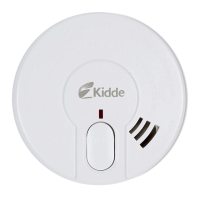
